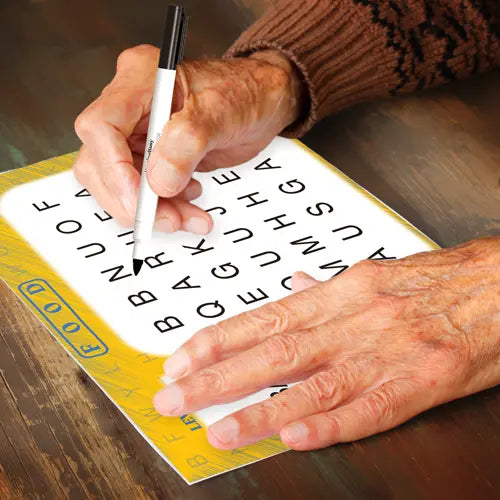
Frontotemporal dementia is a debilitating disease that affects the frontal and temporal lobes of the brain. It is characterized by a progressive decline in behavior, language, and other cognitive functions. Unlike Alzheimer's disease, which primarily affects memory, frontotemporal dementia can have a profound impact on personality and social behavior.
As the disease progresses through its various stages, patients may experience significant changes in their ability to communicate, interact with others, and perform everyday tasks. In this article, we will explore the different stages of frontotemporal dementia and what patients and caregivers can expect at each stage.
Frontotemporal Dementia Explained
Frontotemporal dementia (FTD) is a type of dementia that affects the frontal and temporal lobes of the brain. The disease is caused by the degeneration of nerve cells in these areas of the brain, leading to a decline in cognitive function, behavior, and language.
FTD is different from Alzheimer's disease, which primarily affects memory. In FTD, the changes in behavior and personality can be more profound than the changes in memory.
There are two main types of Frontotemporal Dementia (FTD):
1. Behavioral variant FTD (bvFTD)
This type is characterized by changes in behavior, personality, and social interactions. Symptoms of bvFTD can include apathy, disinhibition, repetitive behaviors, and difficulty with decision-making.
2. Primary Progressive Aphasia (PPA)
This type is characterized by a decline in language skills, such as difficulty speaking, understanding speech, and finding the right words. Patients may also experience difficulty with reading and writing.
The Stages of Frontotemporal Dementia
In the stages of frontotemporal dementia, patients may experience significant changes in their ability to communicate, interact with others, and perform everyday tasks. These changes can be difficult for both the patient and their caregivers.
Understanding the stages of FTD can help caregivers provide the best possible care for their loved ones.
Stage 1: Early Stage of Frontotemporal Dementia
At the early stage of FTD, patients may experience subtle changes in their behavior or language. They may become more disinhibited, forgetful, or apathetic. They may also have difficulty with decision-making and planning. As the disease progresses, these symptoms can become more pronounced. Caregivers should be on the lookout for any changes in behavior or personality that may indicate the onset of FTD.
Below are some common symptoms:
-
Increased impulsiveness
-
Socially inappropriate behavior
-
Mood swings
-
Difficulty regulating emotions
-
Difficulty with language and communication
-
Memory loss
-
Problems with decision-making and planning
Early stage can last for several years, with symptoms gradually worsening over time. It can be difficult to diagnose FTD in the early stages, as the symptoms can be mistaken for other conditions such as depression or anxiety. While memory loss is a common symptom of dementia, it may not be as prominent in the early stages of FTD compared to other forms of dementia.
Stage 2: Middle Stage of Frontotemporal Dementia
In the middle stage of FTD, patients may become more socially isolated and have difficulty understanding and interacting with other people. They may also develop compulsive behaviors, such as hoarding or repetitive counting, and become increasingly dependent on caregivers for daily activities.
As FTD progresses, the symptoms become more severe and can significantly affect a person's daily life. Below are some common symptoms observed in the middle stage:
-
Decline in communication abilities
-
Withdrawal and isolation from social activities
-
Changes in eating habits
-
Loss of interest in previously enjoyable activities
-
Difficulty with mobility and balance
-
Muscle weakness
-
Problems with coordination
This stage can last for several years and is characterized by a decline in functional abilities. Communication challenges can become more pronounced during this stage, making it difficult for patients to express their needs and wants. Changes in eating habits can lead to weight loss and malnutrition if not addressed. Muscle weakness and problems with coordination can increase the risk of falls and injuries.
Stage 3: Late Stage of Frontotemporal Dementia
In the late stage of FTD, patients may become increasingly dependent on caregivers and require assistance with most daily tasks. They may become bedridden and unable to communicate verbally. Patients may also experience changes in their sleep patterns, such as sleeping more during the day and less at night. Loss of memory and confusion can also become more pronounced at this stage. Caregivers should be prepared to provide the necessary care and support for their loved ones during this difficult time.
The late stage of FTD is the most advanced stage of the disease. Below are some common symptoms:
-
Loss of ability to communicate
-
Complete dependence on caregivers for daily activities
-
Difficulty with swallowing, which can lead to malnutrition and dehydration
-
Increased risk of infections and other medical complications
-
Seizures
-
Muscle rigidity
-
Loss of bladder or bowel control
Late stage of FTD can last for several years, and patients typically require full-time care. The loss of communication abilities can be distressing for both patients and their loved ones. Difficulty with swallowing can increase the risk of aspiration pneumonia, a potentially life-threatening condition. The risk of infections and other medical complications is higher in the late stage due to weakened immune systems and decreased mobility. Seizures can be a side effect of some medications used to manage FTD symptoms. Muscle rigidity and loss of bladder or bowel control can significantly impact a person's quality of life in the late stages.
Causes of Frontotemporal Dementia
Frontotemporal dementia (FTD) is a neurodegenerative disorder that affects the frontal and temporal lobes of the brain. The exact cause of FTD is not fully understood, and it is likely that multiple factors contribute to its development. In this section, we will explore some possible causes of FTD.
1. Genetic Mutations
Research suggests that mutations in genes such as MAPT, GRN, and C9orf72 may contribute to the development of FTD (1). These mutations lead to the accumulation of abnormal proteins in the brain, which can damage nerve cells and cause them to degenerate.
2. Head Injuries
Traumatic brain injuries have been linked to an increased risk of developing FTD (2). This is because head injuries can cause damage to the brain's frontal and temporal lobes, where FTD typically occurs.
3. Environmental Toxins
Exposure to certain environmental toxins, such as heavy metals and pesticides, has been associated with an increased risk of FTD (2). These toxins can cause inflammation and damage to nerve cells in the brain, leading to degeneration over time.
4. Family History
Studies have shown that individuals with a family history of FTD are at a higher risk for developing the disease themselves (3). This suggests that there may be a genetic component involved in some cases of FTD.
5. Age
FTD is more common in individuals over the age of 60 (4). While aging itself does not cause FTD, it may make individuals more susceptible to other factors that contribute to its development.
Not all cases of FTD are caused by these factors alone or in combination with each other. The role of genetics in FTD is complex, and not all cases are caused by genetic mutations. However, genetic testing can be helpful in identifying individuals who may be at risk for developing FTD.
More research is needed to fully understand the causes of FTD and develop effective treatments. Currently, there are no known cures for FTD, but early diagnosis and management of symptoms can improve quality of life for patients and their caregivers.
Current Research on Potential Treatments or Cures for FTD
Currently, there are no known cures for frontotemporal dementia (FTD). However, researchers are actively working to develop treatments that can slow the progression of the disease and improve quality of life for patients.
Some potential treatments being explored include:
1. Medications
Several medications are currently being tested in clinical trials for their effectiveness in treating FTD symptoms. These medications aim to target specific neurotransmitters in the brain that are affected by FTD, such as dopamine and serotonin. While these medications may not cure the disease, they may help manage symptoms and improve quality of life.
2. Gene Therapy
Gene therapy is an emerging field that involves modifying a patient's genes to treat or prevent diseases. Researchers are exploring the use of gene therapy to treat FTD by targeting specific genes that contribute to the development of the disease.
3. Stem Cell Therapy
Stem cell therapy involves using stem cells to replace damaged or diseased cells in the body. Researchers are investigating whether stem cell therapy could be used to regenerate nerve cells in the brain that have been damaged by FTD.
4. Lifestyle Changes
While there is no definitive evidence that lifestyle changes can prevent or cure FTD, some studies suggest that certain lifestyle factors may be associated with a lower risk of developing the disease. For example, regular exercise and a healthy diet may help reduce inflammation and oxidative stress in the brain, which can contribute to neurodegenerative diseases like FTD.
It is important to note that these potential treatments are still in the early stages of research and testing, and it may be several years before they become widely available for patients with FTD. In addition, not all patients will respond equally well to these treatments, and some may experience adverse side effects.
Despite these challenges, ongoing research into potential treatments for FTD gives hope to patients and their families. By better understanding the underlying causes of the disease and developing effective treatments, researchers are working to improve the lives of those affected by FTD.
Caring for Someone with FTD
Caring for someone with FTD can be challenging, but there are steps that caregivers and loved ones can take to provide the best possible care. It is important to create a safe and supportive environment for the person with FTD, and to provide them with opportunities for social interaction and engagement. Caregivers should also work closely with healthcare professionals to manage the person’s symptoms and provide appropriate medical care.
In addition to providing physical care, it is also essential to provide emotional support to the person with FTD and their family members. FTD can be a devastating disease, and it can be challenging for caregivers and loved ones to cope with the changes and challenges that come with the disease. Seeking the support of a therapist or support group can be helpful for managing the emotional impact of FTD.
Strategies for Managing Behavioral Symptoms in the Early Stages of FTD
The early stages of Frontotemporal Dementia (FTD) can be challenging for both patients and their caregivers. Patients may experience changes in behavior, personality, and social interactions, which can lead to difficulties in daily life. Caregivers can help manage these symptoms by using various strategies.
1. Establish a Routine
Establishing a routine can help provide structure and stability for patients with FTD. This can include setting regular times for meals, activities, and rest periods. A consistent routine can help reduce anxiety and confusion for the patient.
2. Provide Clear Instructions
Patients with FTD may have difficulty with decision-making and planning, so providing clear instructions can be helpful. Caregivers should break down tasks into smaller steps and give simple, concise instructions. It may also be helpful to use visual aids or written instructions to reinforce verbal communication.
3. Minimize Distractions
Patients with FTD may become easily distracted by noise or other stimuli in their environment. Caregivers should try to minimize distractions as much as possible by creating a calm and quiet environment. This can include turning off the television or radio during meal times or other activities.
4. Practice Patience and Understanding
Behavioral changes in patients with FTD can be frustrating and difficult to understand for caregivers. However, it is important to practice patience and understanding when interacting with the patient. Try to remain calm in stressful situations and avoid arguing or becoming confrontational.
5. Encourage Social Interaction
Social interaction is important for maintaining a sense of well-being in patients with FTD. Caregivers should encourage social interaction through activities such as group outings or visits from friends and family members.
By using these strategies, caregivers can help manage behavioral symptoms in the early stages of FTD and improve quality of life for both the patient and their loved ones. It is important to work closely with healthcare professionals to develop an individualized care plan that addresses the specific needs of the patient.
Available Resources for Caregivers of FTD Patients
Caring for a loved one with Frontotemporal Dementia (FTD) can be challenging and overwhelming. However, caregivers do not have to go through it alone. There are various resources available to provide support and assistance to caregivers of FTD patients.
1. Support Groups
Support groups can be an excellent resource for caregivers of FTD patients. These groups provide a safe and supportive environment where caregivers can connect with others who are going through similar experiences. Support groups can offer valuable information, emotional support, and practical advice on how to manage the challenges of caring for someone with FTD.
2. Respite Care
Respite care is temporary care provided to a person with FTD so that their caregiver can take a break from their caregiving responsibilities. Respite care can be provided in the home or in a facility, depending on the needs of the patient and caregiver. This service allows caregivers to rest and recharge while ensuring that their loved one receives quality care.
3. Caregiver Education Programs
Caregiver education programs provide information and training on how to best care for someone with FTD. These programs cover topics such as communication strategies, behavior management techniques, and self-care for caregivers. Education programs can help caregivers feel more confident in their ability to provide effective care for their loved ones.
4. Online Resources
There are many online resources available for caregivers of FTD patients, including websites, forums, and blogs. These resources offer information, advice, and support from other caregivers who have experience caring for someone with FTD.
5. Healthcare Professionals
Healthcare professionals such as doctors, nurses, social workers, and therapists can also be an excellent resource for caregivers of FTD patients. These professionals can provide medical care and treatment as well as guidance on how to manage symptoms and navigate the healthcare system.
It is important for caregivers to take advantage of the resources available to them. Caring for someone with FTD can be challenging, but with the right support and assistance, caregivers can provide the best possible care for their loved ones while also taking care of themselves.
Summary
Frontotemporal dementia (FTD) is a neurodegenerative disorder that affects the frontal and temporal lobes of the brain. The exact cause of FTD is not fully understood, but possible causes include genetic mutations, head injuries, exposure to environmental toxins, family history, and aging.
While there are currently no known cures for FTD, researchers are exploring potential treatments such as medications, gene therapy, stem cell therapy, and lifestyle changes. Caring for someone with FTD can be challenging, but caregivers can provide the best possible care by establishing a routine, providing clear instructions, minimizing distractions, practicing patience and understanding, and encouraging social interaction.
Resources available to caregivers of FTD patients include support groups, respite care, caregiver education programs, online resources, and healthcare professionals. By taking advantage of these resources and providing compassionate care to their loved ones with FTD, caregivers can improve the quality of life for both the patient and themselves.
Sources
-
Frontotemporal Dementia. (2021). Alzheimer's Association.
-
Frontotemporal Dementia Stages and Symptoms. (2021). BrightFocus Foundation.
-
Rohrer JD, Guerreiro R, Vandrovcova J, et al. The heritability and genetics of frontotemporal lobar degeneration. Nat Rev Neurol. 2013;9(5):224-234.
-
Mendez MF, Shapira JS, McMurtray A, Licht E. Preliminary findings: behavioral worsening on donepezil in patients with frontotemporal dementia. Am J Geriatr Psychiatry. 2007;15(1):84-87.
Activities for Older Adults with Alzheimer's, Dementia, or Memory Loss
At Keeping Busy, we understand the challenges faced by caregivers of older adults with Alzheimer's, dementia, or memory loss. That's why we offer a range of activity products designed to engage and stimulate individuals with cognitive impairments.
Our products are carefully selected and curated to provide meaningful and enjoyable activities that can improve mood, reduce anxiety, and promote social interaction. From puzzles and games to sensory stimulation kits and art supplies, our products are designed to meet the unique needs of each individual.
We believe that staying active and engaged is essential for maintaining quality of life for older adults with cognitive impairments. By incorporating our activity products into daily routines, caregivers can help their loved ones stay mentally and physically stimulated while also providing a sense of purpose and accomplishment.
Visit our website to learn more about our products and how they can benefit your loved one with Alzheimer's, dementia, or memory loss.




